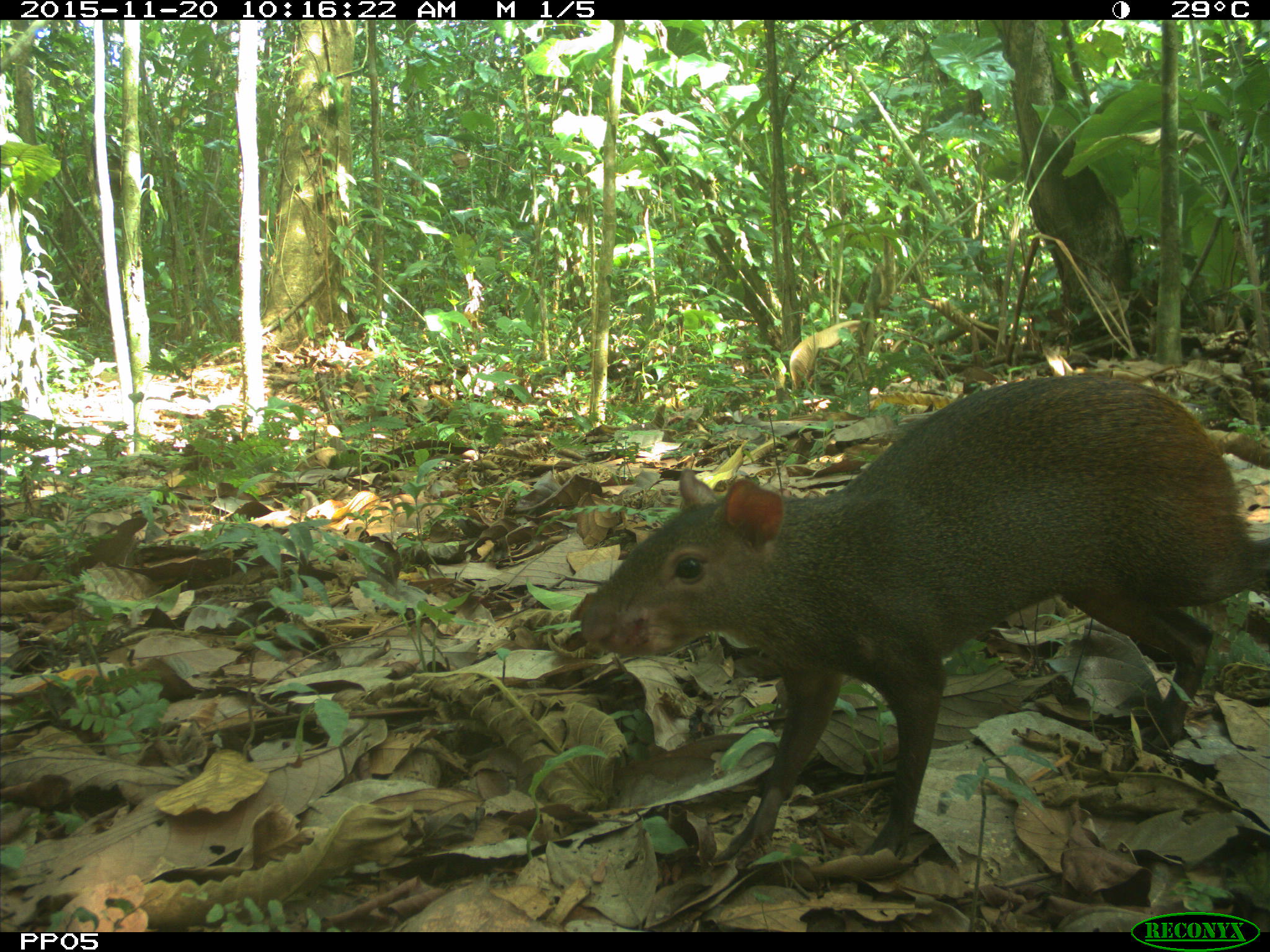This cute, little rodent is our most frequently detected mammal on the camera traps we have set up in Peperpot Nature Park, Suriname. Called the red-rumped agouti, you can see where this rodent gets its name – from its fiery, red behind!
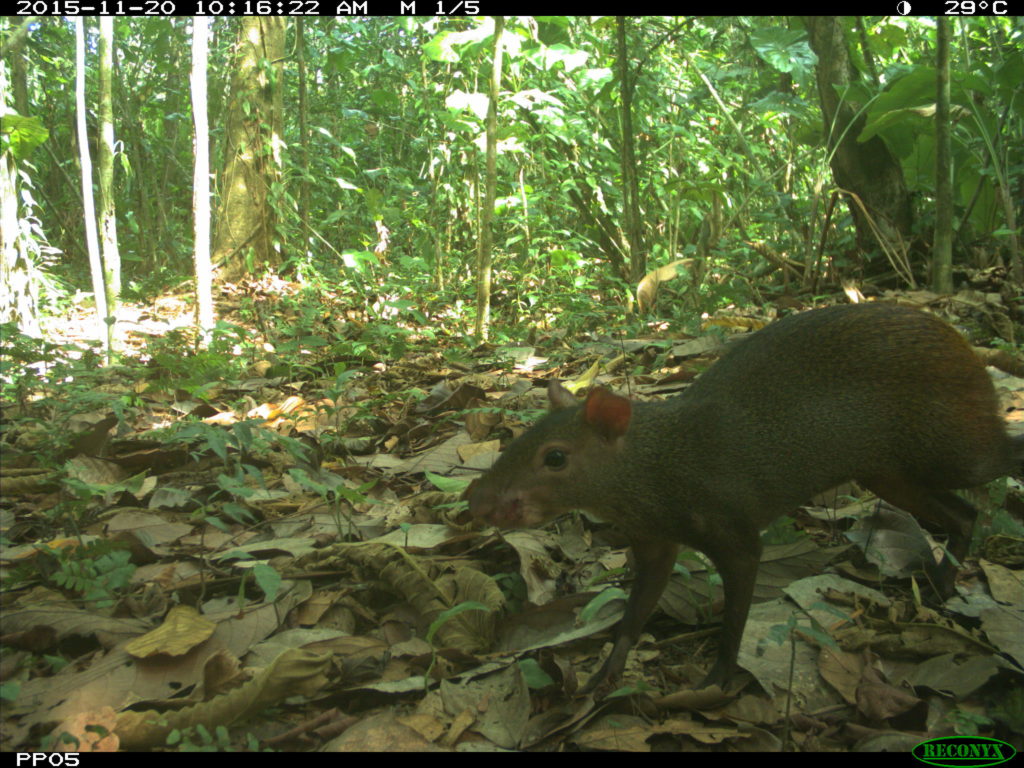
Agoutis, like our Eastern grey squirrels, are scatter hoarders – they will collect and cache seeds in the ground to be used throughout the rest of the year. In Brazil, agouti densities around brazil nut trees have been found to be two times higher (because brazil nuts are delicious!).
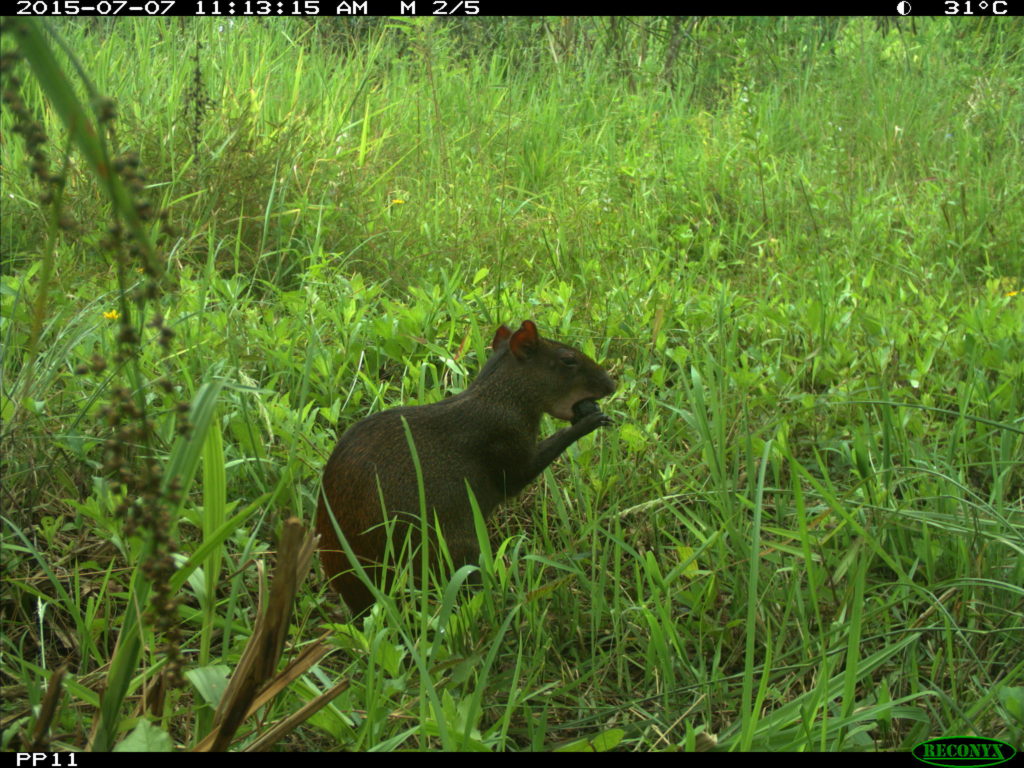
Seeds are even cached and re-cached. Scientists created a special GPS tracker to tie to seeds to track how far they are dispersed and they discovered something really cool (you can see the trackers in the Smithsonian’s National Museum of Natural History in Washington, DC). Many plants in the neotropics have large seeds and were likely consumed and dispersed by large species that went extinct in the Pleistocene. So without those large animals dispersing their seeds, how have the plants persisted?
With their GPS trackers on seeds, they found that seeds were cached and re-cached by rodents like agoutis up to 36 times and individuals would steal each other’s buried seeds.
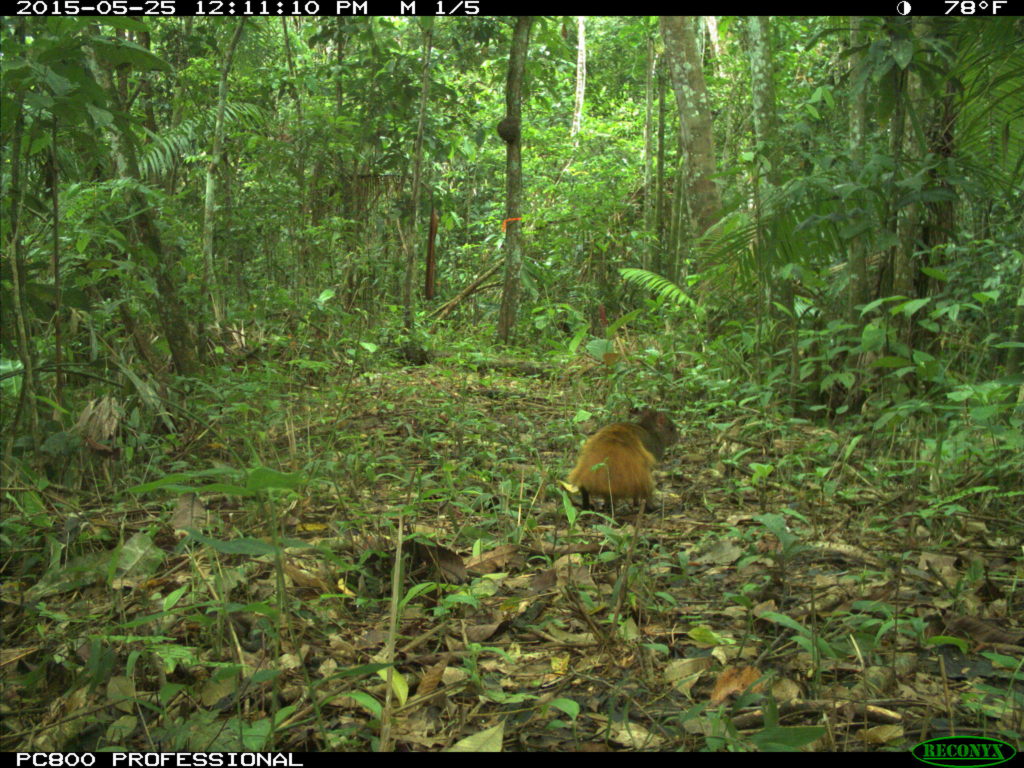
This constant reburial of seeds allowed the seeds to move big distances – about 35% of seeds at distances greater than 100 m. Therefore, the work of many little rodents seemingly made up for the long-distance dispersal of larger species.
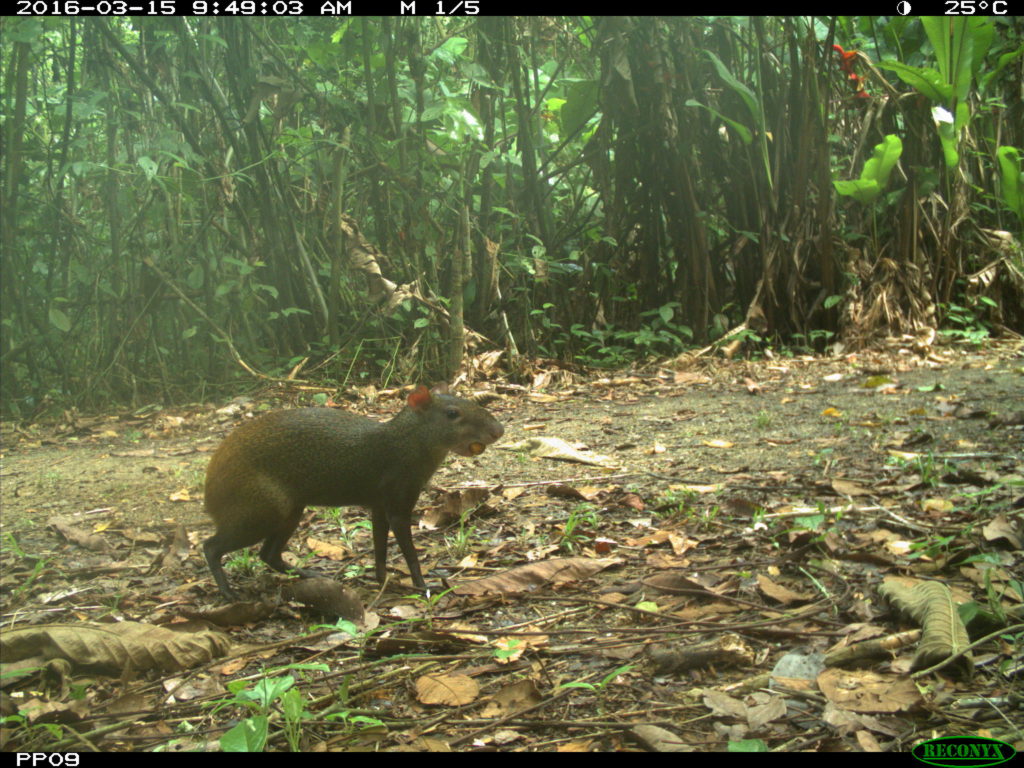
For more camera trap photos of mammals in the new world, check out “11 Amazing Camera Trap Photos from Mexico Taken By Kids.”
Love this post? Share it with friends!

